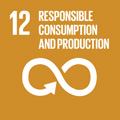- Docente: Stefania Manzi
- Credits: 9
- SSD: ING-IND/22
- Language: Italian
- Moduli: Stefania Manzi (Modulo 1) Stefania Manzi (Modulo 2)
- Teaching Mode: In-person learning (entirely or partially) (Modulo 1); In-person learning (entirely or partially) (Modulo 2)
- Campus: Bologna
- Corso: First cycle degree programme (L) in Industrial Design (cod. 8182)
-
from Feb 18, 2025 to May 14, 2025
-
from May 27, 2025 to Jun 11, 2025
Learning outcomes
At the end of the Course, the student will achieve a basic knowledge for the comprehension of: (a) the basics related to the properties and use of materials; (b) the knowledge related to the chemical and physical properties of the main classes, subsets or particular materials of extensive use; (c) the mechanical behaviour of materials and the use of these properties for the sizing of an object.
Moreover, the student will achieve the basic technological knowledge for the production, development, characterisation and use of polymeric, metallic, vitreous and composite materials, concerning their use, as well as the expertise even in terms of terminology, for an aware and correct use in design.
Course contents
Materials science. Classification of materials. Main metals, ceramics, polymers and composites used for the manufacturing of industrial products. General properties and their measurement. Mechanical properties: elastic properties, plastic deformation, fracture. Tests and Standards.
Structure. Crystalline and amorphous materials. Structural imperfections and their effects on the properties of crystalline solids. Microstructure; correlation between microstructure and properties of materials.
Mechanical properties of materials: elastic properties, plastic deformation, fracture. Tests and Standards for the measurement of mechanical properties.
Metals: Pure metals and metal alloys. Phase transformation in metal alloys. Steels and cast irons: the iron-carbon phase diagram. Mechanical properties as a function of microstructure and carbon content. Heat treatments of steels: tempering, annealing, normalizing. Copper and alloys; aluminium and alloys. Properties and manufacturing technologies of metals. Trace on corrosion of metals.
Ceramics: Ceramics: bricks, tiles, cement, mortars, concretes; porcelain, glass. Physical, mechanical properties and manufacturing technologies of ceramics.
Polymers: Thermoplastic and thermosetting polymers. Structure and crystallinity of thermoplastic polymers. Thermal transitions in thermoplastic polymers: glass transition temperature and melting temperature. Main technical polymers: structure, physical, thermal and mechanical properties, applications. Manufacturing technologies of polymers.Readings/Bibliography
The educational material shown during the lessons will be at students’ disposal.
Suggested readings for deepening of the lesson topics:
Alberto Cigada, Barbara Del Curto, Luigi De Nardo, Roberto Frassine, Gabriele Fumagalli, Marinella Levi, Claudia Marano, Maria Pia Pedeferri, Marta Rink, “Materiali per il design”, Casa Editrice Ambrosiana, Milano, 2015
Luca Bertolini, Maddalena Carsana, “Materiali da costruzione”, Volume Primo, CittaStudi Edizioni, 2014
William D. Callister, David G. Rethwisch, “Scienza e ingegneria dei materiali”, EdiSES, Napoli, 2019
William D. Callister, David G. Rethwisch, “Materiali per l’ingegneria civile ed industriale”, EdiSES, Napoli, 2015
William F. Smith, Javad Hashemi, “Scienza e tecnologia dei materiali”, McGraw-Hill, Milano, 2016Teaching methods
Lectures.
Notes on the subjects of the course will be provided through websites.
During the course, laboratory exercises on the measurement of physical and mechanical properties of materials will be carried out.
Practice exercises will be conducted about the extempore drawing.
"In consideration of the types of activities and teaching methods adopted, the attendance of this training activity requires all students to carry out Modules 1 and 2 by e-learning [https://www.unibo.it/it/servizi -and-opportunities / health-and-assistance / health-and-safety / safety-and-health-in-places-of-study-and-training] and participation of specific training on safety and health protocols (Module 3). Information on the date and method of attendance of module 3 can be consulted in the section of the study program website."Assessment methods
Written examination, which consists of two tests:
1. Questions on the physical properties, mechanical properties and manufacturing technologies of the different classes of materials. The time available for the test is 30 minutes.
2. Extempore drawing: drawing of an industrial product (either the material or the product will be given). Clarity of exposition, originality and feasibility will be evaluated. The time available for the test is 30 minutes.
A global score of 30 points can be obtained. To pass the exam a passing grade must be achieved in the first test and a minimum score of 18 points must be obtained.
Teaching tools
Practice exercises will be conducted about the measurement of the main physical and mechanical properties of materials.
Practice exercises will be conducted about the extempore drawing.
Office hours
See the website of Stefania Manzi
SDGs



This teaching activity contributes to the achievement of the Sustainable Development Goals of the UN 2030 Agenda.
